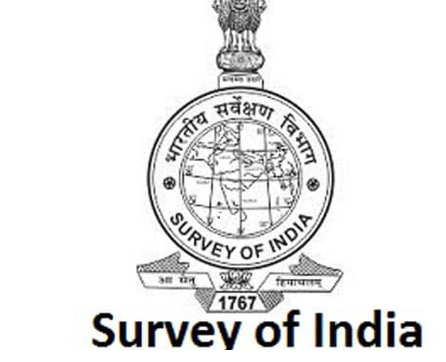Context:
In an interview to a media house, the Surveyor-General of India has outlined that Survey of India (SoI) will remain the arbiter of maps that deal with State boundaries and national borders.
More on News:
- Survey of India will also maintain and provide reference stations that are vital to cartographers to prepare higher resolution maps.
- It will continue to maintain CORS (Continuously Operating Reference Stations) that are necessary to create accurate digital maps.

Image Source: The Hindu
About Survey of India (SoI):
- The Survey of India is a scientific department of the Government of India under the Department of Science & Technology.
- It serves as the country’s national survey and mapping organisation.
- Established in 1767, it is the oldest scientific department of the government.
- Headquarters: Dehradun, Uttarakhand.
-
- It provides expert advice to the government on survey-related matters, including Geodesy, Photogrammetry, Mapping, and Map Reproduction.
- Geodesy: It is the scientific study of accurately measuring and understanding the Earth’s geometric shape, orientation in space, and gravity field.
- Photogrammetry: It is the science of taking measurements from photographs.
National Geospatial Policy 2022:
- Aim: To strengthen the location-centric industry to support the information economy.
- Geospatial Data Promotion and Development Committee (GDPDC): It will serve as an apex body fcr formulating guidelines for promotion of the geospatial sector.
- Digital Elevation Model (DEM): It plans to set up high resolution topographical survey and mapping, with a high-accuracy Digital Elevation Model (DEM) by 2030.
- Mapping Infrastructure: By 2035, the policy sets the goals of usage of geospatial data including mapping of subsurface infrastructure in major cities and towns.
Benefits:
- Helpful in achieving SDGs: Geospatial technology can help in achieving Sustainable Development Goals (SDGs).
- Bridging the Digital Divide: It also aims to support innovation and creation in the field by bridging the geospatial data divide”.
- Capacity development: It seeks to create long-term, sustainable geospatial information management through capacity development and education programmes.
- Democratisation of data:The policy is structured to contribute towards the democratisation of data and other geospatial data produced using public funds.
- Promoting Ease of doing business: Liberalisation in the geospatial field has the potential to support the government’s ease of doing business policy.
News Source: The Hindu
![]() 22 Feb 2023
22 Feb 2023

